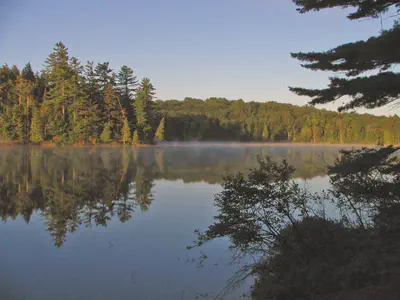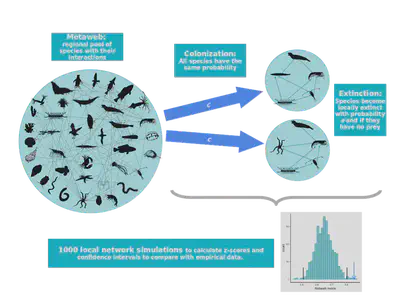What Determines Food Web Structure?

In nature species interact among each other in many ways. The most common and studied interaction is that between a predator and its prey. A food web can be defined as a network of interactions that describes who eats whom in a certain ecosystem and at a certain time of the year. In any ecosystem, in a terrestrial, freshwater or marine environment, the so-called food web is comprised by lots of species (hundreds) and interactions (thousands), showing a complex network of predator-prey interactions.
In a recent paper in the Journal of Animal Ecology, we studied the assembly process of food webs, that means how the complex network of interactions is formed and which are the principal factors that drive such processes. To put it in simple words, our research question was the following: what determines the structure of a food web?

Due to previous investigations of colleagues we now know that the structure of a food web is the result of community assembly, which is a repeated process of species arrival, colonisation and local extinction. This implies that there are two major components that determine the structure of a food web: 1) the composition of species from where individuals migrate to new habitats, referred to as the regional pool or metaweb; and 2) a selective process that determines which species can arrive and persist in the new habitat. We also know that the first to colonise new habitats are species with a broad diet (i.e. great variety of prey). Thus, predator-prey interactions are established during the assembly process that begins the formation of a network of interactions: the food web “in progress”. Added to this, the characteristics of the habitat (substrate, climatic conditions) and the dispersal capability of the species are important factors that also control the assembly process of the food web, determining which species might be able to persist in time.

The structure of a food web is ultimately constrained by the species and potential interactions that exist in the regional pool, that is, the metaweb. Such metaweb is shaped by evolutionary and biogeographical processes that imply large spatial and temporal scales, containing many habitats and communities. Each of the local communities can have different food web structures, in terms of species and interactions among them. Some theorists conceive of assembly as a non-Darwinian selection process, whereby species and particular structures that destabilise the food web will be lost and stabilising structures will persist. Therefore, we should expect those stabilising structures to be over-represented in local food webs compared to the metaweb.
To test the hypothesis that the selective processes are responsible for food web structure, we created an assembly model, where species migrate from a regional pool and persist in a theoretical local food web given at least one prey item available. The model considers colonisation-extinction and secondary extinctions (i.e. if a species arrives and none of its prey are present) events constrained by network structure that is represented by predator-prey interactions. Thus, the model does not include local selective processes and habitat constraints that are thought to control the assembly process. Then we compared the theoretical local food webs created from the assembly model with real food webs. We hypothesised that, if local processes like stability determine the food web structure, then we should observe a consistent difference in the network structural characteristics between real food webs and those assembled from the model. To test our hypothesis we compiled 58 real food webs from a variety of regions and ecosystems: 2 marine food webs from Antarctica, 50 freshwater ones from the Adirondacks region and 6 from an Arthropod community in six islands of the Florida Keys.

Contrary to our expectations, we found that most structural characteristics didn’t differ between the real and modeled food webs. We particularly compared properties related to stability, such as modularity and the frequency of three-species motifs, and habitat filtering and dispersal limitation, such as topological roles that characterise how many interactions a species has within their module and/or between modules (i.e. modules are formed by a group of species that share more interactions compared to other species). This suggests that evolutionary and biogeographical processes that are established in the metaweb are more important and might drive the studied structural characteristics in a food web than local processes such as habitat filtering and dispersal limitations. In particular, our study forces us to re-think the way we approach the study of food web structure. The network properties that we as ecologists commonly use to shed light on this aspect might be a by-product of the assembly process already driven at the metaweb spatial and temporal scales.
More info: Check the complete publication here